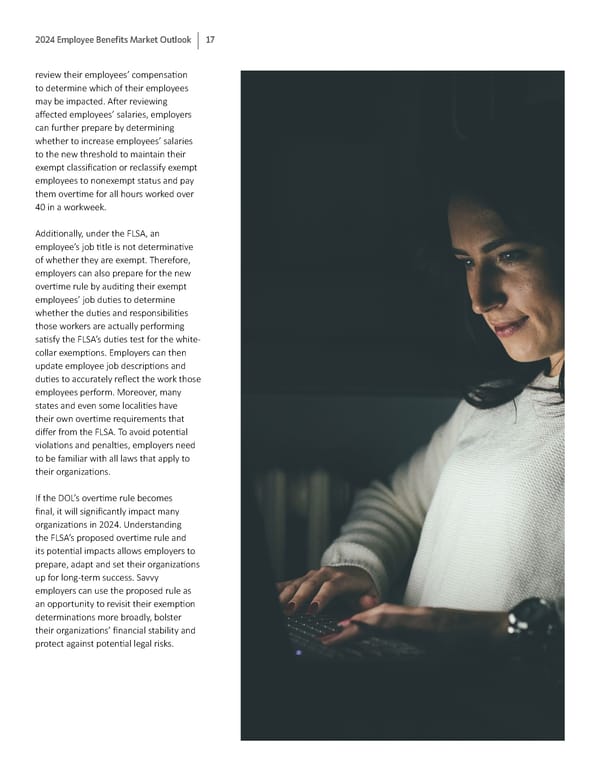2024 Employee Benefits Market Outlook 17 review their employees’ compensa琀椀on to determine which of their employees may be impacted. A昀琀er reviewing a昀昀ected employees’ salaries, employers can further prepare by determining whether to increase employees’ salaries to the new threshold to maintain their exempt classi昀椀ca琀椀on or reclassify exempt employees to nonexempt status and pay them over琀椀me for all hours worked over 40 in a workweek. Addi琀椀onally, under the FLSA, an employee’s job 琀椀tle is not determina琀椀ve of whether they are exempt. Therefore, employers can also prepare for the new over琀椀me rule by audi琀椀ng their exempt employees’ job du琀椀es to determine whether the du琀椀es and responsibili琀椀es those workers are actually performing sa琀椀sfy the FLSA’s du琀椀es test for the white- collar exemp琀椀ons. Employers can then update employee job descrip琀椀ons and du琀椀es to accurately re昀氀ect the work those employees perform. Moreover, many states and even some locali琀椀es have their own over琀椀me requirements that di昀昀er from the FLSA. To avoid poten琀椀al viola琀椀ons and penal琀椀es, employers need to be familiar with all laws that apply to their organiza琀椀ons. If the DOL’s over琀椀me rule becomes 昀椀nal, it will signi昀椀cantly impact many organiza琀椀ons in 2024. Understanding the FLSA’s proposed over琀椀me rule and its poten琀椀al impacts allows employers to prepare, adapt and set their organiza琀椀ons up for long-term success. Savvy employers can use the proposed rule as an opportunity to revisit their exemp琀椀on determina琀椀ons more broadly, bolster their organiza琀椀ons’ 昀椀nancial stability and protect against poten琀椀al legal risks.
 2024 Employee Benefits Market Outlook Page 16 Page 18
2024 Employee Benefits Market Outlook Page 16 Page 18